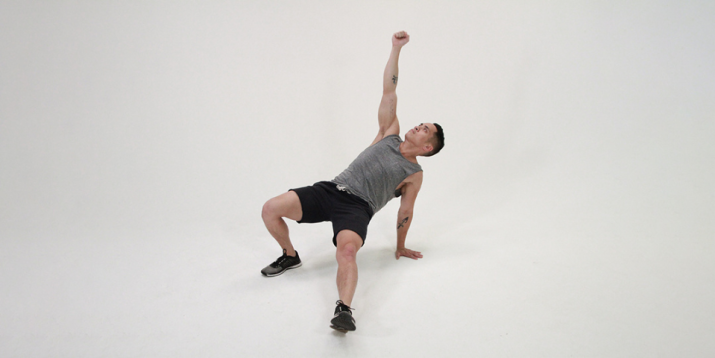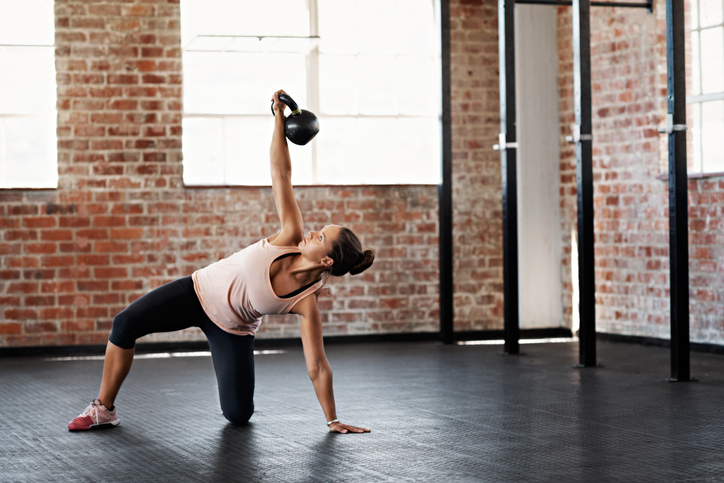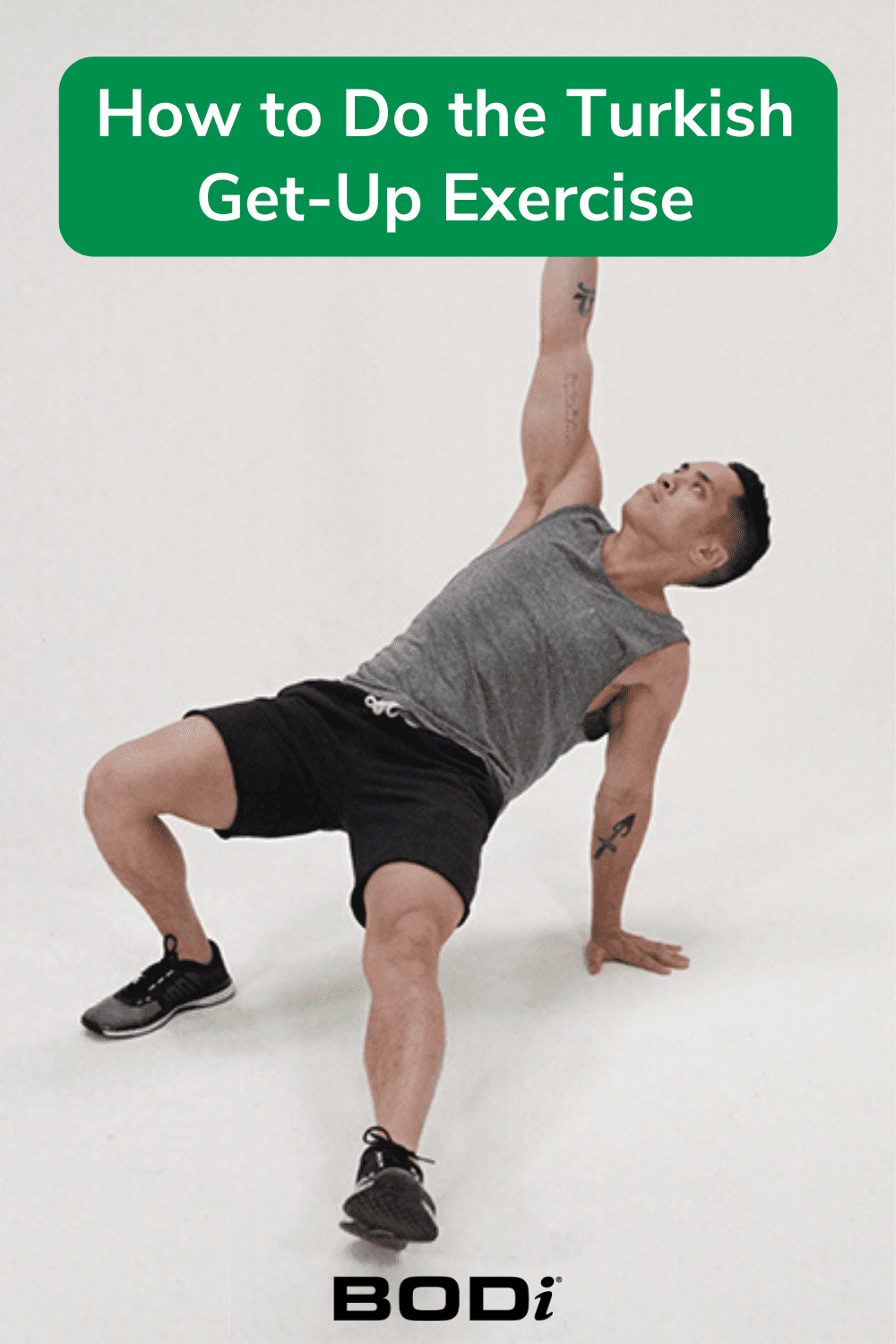Learn the Turkish Get-Up: The Fullest-Body Exercise

The Turkish get-up (or TGU) may very well be the consummate functional, total-body exercise. After all, it leaves roughly zero muscles untouched, hits every plane of movement, gets your heart rate up, and improves total-body strength and stability, explains Cody Braun, CSCS.
When you consider that the Turkish get-up is really a flow through about a half dozen different exercises, it becomes clear why it’s so beneficial — and why performing the Turkish get-up with proper form can be complicated.
Fortunately, despite its complexities, the Turkish get-up exercise doesn’t have to be hard to learn. By breaking down its steps one by one — practicing them using just your body weight — you can easily learn the exercise so that you can level up safely and effectively.
Turkish Get-Up: Step-by-Step Instructions
- Get into starting position: Lying flat on your back, bend your right leg with your right foot flat on the floor while you keep your left leg extended just outside hip width. Make a fist with your right hand and extend your right arm straight toward the ceiling, keeping your left arm on the floor about 45 degrees from your body, palm facing down.
- Keeping your eyes fixed on your right fist throughout the entire movement, engage your core and use your abs to roll up onto your left forearm.
- Continue rising up to a seated position, straightening your left arm so that you are supported on your left hand.
- Keeping your left leg extended and right foot on the floor, push through your right heel and squeeze your glutes to lift your hips off the floor.
- Sweep your left leg underneath and behind you, placing your left knee on the floor where you were sitting. At this point, your left shin will form a slight angle. Sweep your left foot out to your left so that shin is parallel with your right thigh.
- Use your obliques to straighten your torso, removing your hand from the floor to assume a half-kneeling position.
- With your right hand still extended toward the ceiling, push through your back foot to come up to a standing position, bringing your left foot to meet the right.
- Reverse each step to return to the starting position. Perform equal reps on each side.
How to Make the Turkish Get-Up Easier
- Try the quarter Turkish get-up, which involves performing only the first part of the exercise, and then returning to start. To perform it, press through your foot and hand to raise up onto your forearm, then your hand, and then extend your hips up toward the ceiling. Then reverse those steps to return to the starting position.
- Break down the other steps of the Turkish get-up into single exercises that you can perform one at a time. For example, you can practice sweeping your leg underneath and behind you from the bridge position, or you can perform lunges with one arm overhead.
How to Make the Turkish Get-Up Harder

- Starting light and gradually progressing as you adapt to the load, hold a weight in the hand of your overhead arm throughout the move. You can use a dumbbell, a kettlebell, sandbags, or even at-home items like a milk jug.
- Use a heavier or less stable weight.
What Muscles Does the Turkish Get-Up Target?
The Turkish get-up benefits almost every major muscle group in the body, but it works overtime for these muscles.
- Deltoids: All three sections of the shoulder muscles have to work to support the raised arm and any weight it’s carrying.
- Upper back: Expect improved stabilization in the rotator cuff muscles as well as the traps and rhomboids.
- Abdominals: Both the deep-lying transverse abdominis and six-pack rectus abdominis go to work here.
- Obliques: The internal and external obliques help to resist rotation and tipping toward your weighted side. They also do work when you take your hand off the floor into the half kneeling lunge.
- Quads: You’ll feel these working as you rise up from the kneeling lunge and finish off the ascent of the move.
- Glutes: You’ll strengthen your gluteal muscles as you lift your hips and when you rise up from the kneeling lunge.
- Triceps: The tris of both arms can feel this move, whether they’re holding a weight overhead or helping to push you up from a seated position.

